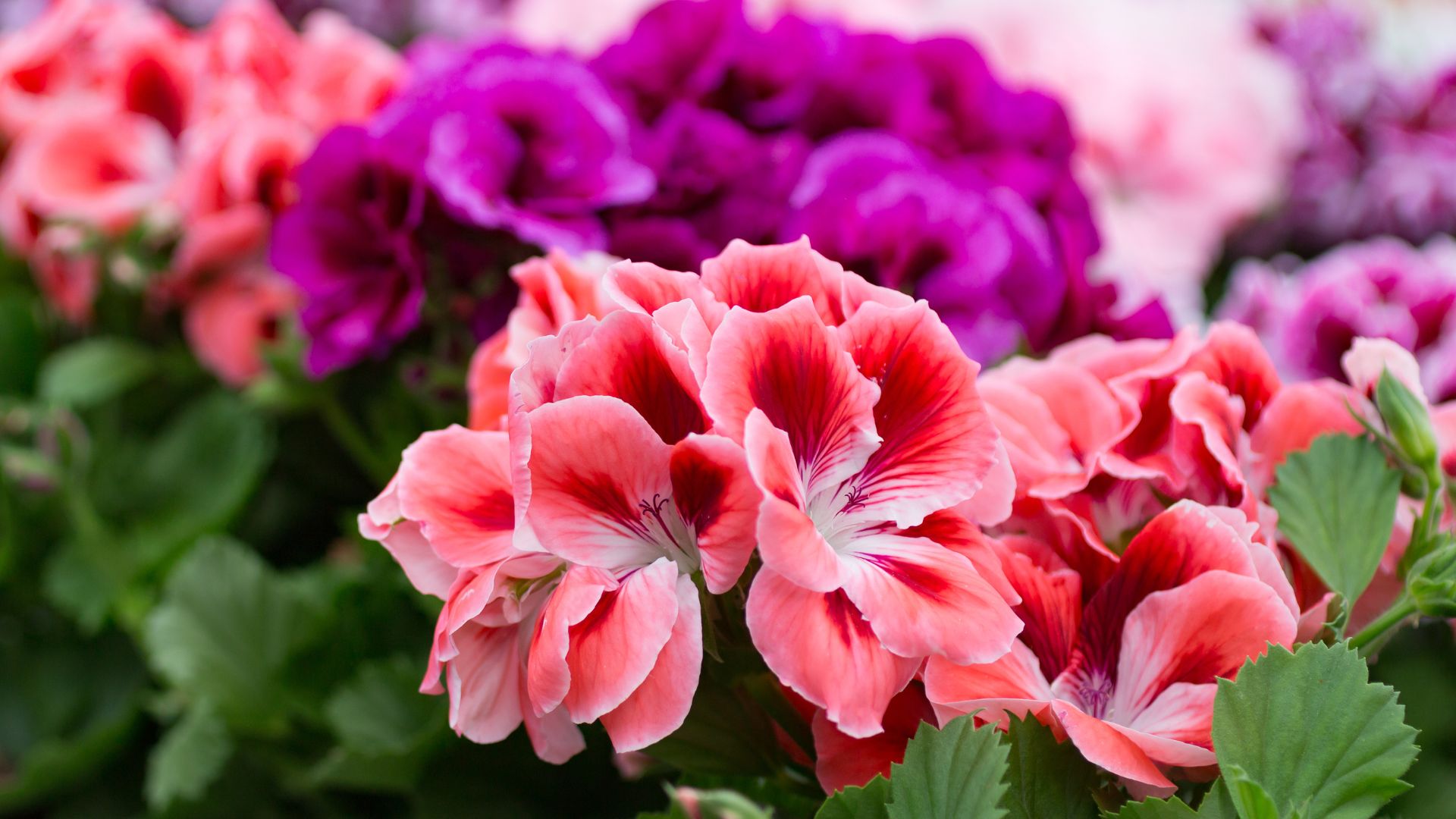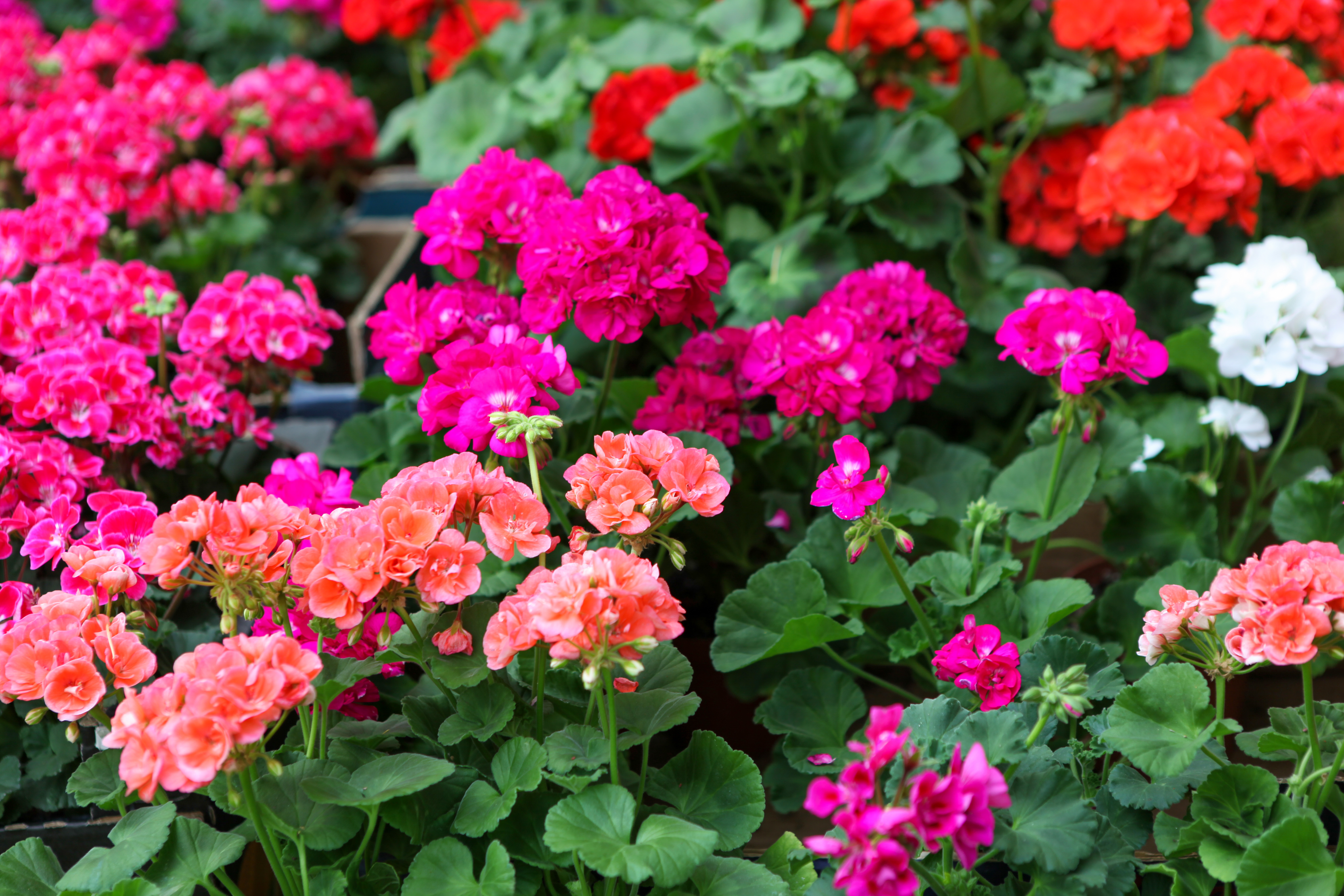
Whether you call them pelargoniums, storksbills, or geraniums, we can all agree that these blooms are a winning planting selection. However, as eye-catching, pretty, and fragrant as geraniums are, they do require some added assistance to help them survive another year in your backyard.
To be specific, they need a touch of overwintering. This is especially prudent for home gardeners who reside in USDA zones 8 and colder because geraniums aren't made to withstand the chill that tends to frequent these areas.
Luckily, the process of overwintering geraniums is not as complex as it may seem. And since we have an expert gardener's insight on hand, it makes understanding this protective method easier than ever. So if you are a proud plant parent to geraniums and wish to extend these blooms into the next sunny season, then now's the time to treat them to some TLC.
How to Overwinter Geraniums

As gardening jobs go, overwintering your geraniums should definitely be high on your to-do list. And to help make sure that your geraniums successfully bloom again next spring, Tony has provided his go-to method for safeguarding these pretty flowers from the cold.
Step 1 - Inspect the plants: Before bringing them inside, Tony encourages inspecting your geraniums for pests or diseases and removing any dead or unhealthy leaves. This is super important since you don't want any creepy crawlies infesting your home.
Step 2 - Dig them up (if planted in the ground): If your geraniums are planted outdoors, he recommends gently digging them up. But be sure to take care to retain as much of the root system as possible, while shaking off any excess soil in the process.
Step 3 - Prune the plants: Next, he tells us to cut back the geraniums by about one-third of their size to reduce their overall height and encourage healthy regrowth.
Step 4 - Repot the plants (optional): "You can either store geraniums in pots or hang them upside down in a cool, dry place," he suggests. "If you opt for pots, place the plants in fresh potting mix."
Step 5 - Store in a cool, dark location: He finds that storing the potted or bare-root geraniums in a place that remains around 50°F (10°C), such as a garage or unheated basement is ideal for best results.
Step 6 - Water occasionally: "If you're storing geraniums in pots, water them sparingly through the winter months," says Tony. "And if you're working with bare-root storage, soak the roots in water once a month."
How to Overwinter Potted Geraniums

Not to worry, we haven't forgotten about your container gardening setup either. In fact, Tony also has a brilliant step-by-step guide to make sure your potted blooms don't waste away in the winter. Here's his guide to follow.
Step 1 - Bring them indoors: "When temperatures drop below 45°F (7°C), move potted geraniums inside," he advises. "Place them in a cool but bright area, such as a windowsill or near a well-lit space."
Step 2 - Reduce watering: Tony explains that geraniums don't need much water in the winter months. So he suggests watering them only when the soil feels dry to the touch, which is usually once every couple of weeks.
Step 3 - Cut back on feeding: "Stop fertilizing geraniums in late fall as they enter dormancy," he cautions. "Only resume feeding in the spring when new growth begins."
Step 4 - Trim the plants: Finally, prune away any leggy or dead growth to encourage healthy new growth when spring returns for a beautiful geranium garden.
When Should you Overwinter Geraniums?

As you can tell, geraniums are one of those plants that need overwintering, but the question is, when?
According to Tony, it's extremely important to time your geraniums winter preparation in advance. He tells us that ideally, you should begin the overwintering process before the first frost hits.
"Typically, this falls in late autumn or early winter, depending on your climate," he explains. "If temperatures are predicted to drop below 45°F (7°C), it's time to bring your geraniums indoors."
With all of this brilliant insight on overwintering geraniums, this gardening chore will hardly feel like one at all. And if you find yourself caught up in the efforts required to protect these flowers, then focus instead on the beautiful foliage they bring to your backyard.
A little bit of care pre-frost is all you need to make sure they don't freeze over in the cold. And we find that it's well worth the time if it means getting to have these stunning florets adorn our gardens again next year.
FAQs
What's the Best Way to Overwinter Geraniums?

Tony tells us that the best method depends on whether your geraniums are in pots or planted in the ground.
"For potted geraniums, simply move them indoors and care for them as houseplants in a cool, bright area," he says. "On the other hand, for ground-planted geraniums, either repot them and bring them indoors or dig them up and store them bare-root in a dark, cool, and dry place until spring."
Price: $25
Volume: 1-Quart Plant
The award-winning Geranium 'Rozanne' flower from Jackson & Perkins is so easy to bring into your backyard thanks to its cold hardy and pest-resistant nature.







